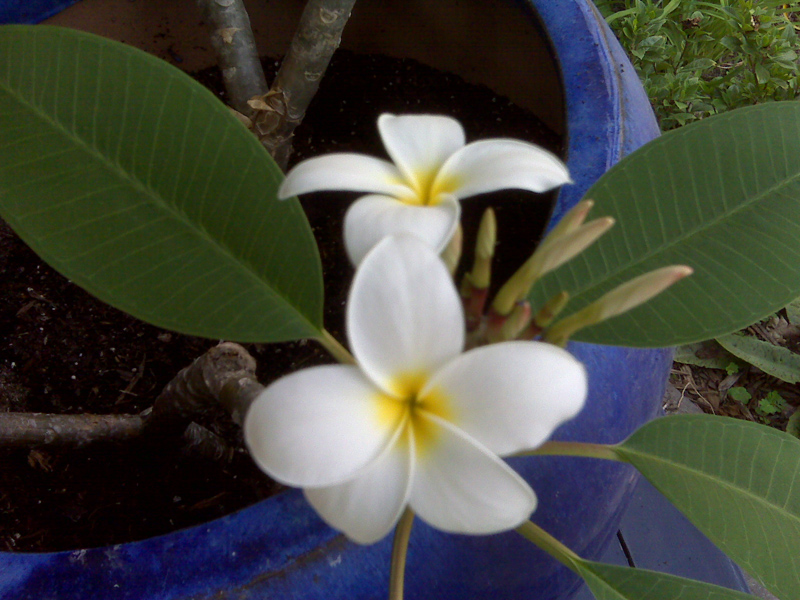June 4, 2009
From the producer: June 4, 2009
Even the birdseed sunflowers say, “It’s hot!”

So, now’s the time to go places, like Idaho. If you can’t swing that this weekend, check out the Mueller Parade of Homes tour, featuring five green-built homes in the new development at the old airport. Bring your checkbook in case you want to make a down payment on a million dollar house. Despite their price tags, it’s just too much fun, with lots of energy-wise and design ideas to keep you cool, helpful people to answer your questions about green building, and a chance to check out the most amazing kitchens, bathrooms, floors, and windows. Drool drool. But after I slathered myself off, I lent a keen eye to the garden designs. Many of them include clumping bamboo as privacy barriers and for the clean, elegant lines.
And what a coincidence! This week on CTG, Tom meets with Merrideth Jiles from The Great Outdoors on that very topic: clumping bamboos. I never realized how many there are, for every application, including this diminutive version, Bambusa multiplex ‘Tiny Fern’.

In case you’ve never been to the Nimitz Garden of Peace at The National Museum of the Pacific War, check out our garden tour to Fredericksburg. It’s soothing and comforting even in the heat, a chance to connect with important history, and for gardeners, to appreciate a fine-tuned garden that you don’t have to maintain!
My garden will never be that clean and elegant. It is soothing, though, especially after midnight, these days! But in the heat of day, I love one of my past experiments, Mexican flame vine, Senecio confuses.

I’d heard back and forth on its cold hardiness, but it’s been around for me for years. Last year it took a drought break and I thought I’d lost it, but it’s back.
On orange, the flame acanthus (Anisacanthus wrightii) is already at work in the cat cove and sunny side beds. The shaded ones have yet to bloom.

In cooler spots, like under the crape myrtle, I love the coneflowers against ‘Powis Castle’ artemesia.

Here’s one I like for its spidery form.

And another with something that looks like a spider, but I don’t know what it is. If you do, I’d love to know!

Under the Chinese pistache in back, plumbago is blooming along with the shrimp plants.

And Salvia coccinea.

Last weekend on pruning chores, I deadheaded the blooming mums and coreopsis to keep the flowers coming. I couldn’t resist collecting coreopsis seeds, and got such a kick watching them spill out into a box as I squished the fat seed heads. I’ll leave them in the box to dry until this weekend. Then I’ll bag them up. I bagged up the dried larkspur seeds and poppy seeds, actually remembering to label them this time!
I finally got around to digging wayward grass around the trees and mulched them, a nice clean look that’s better for the trees, too. Rose dead heading continues, with the cuttings going into a basket for the bunnies’ dinner. Daylily scapes and browned bulb foliage go into the compost pile. As a gardener once told me, “A clean garden is a healthy garden.”
With my new discovery of plumerias, I was thrilled that KLRU’s new senior VP for Development, Betsy Gerdeman, shared this picture of hers. On December 26, she took a cutting from her aunt’s house in Rockport and stuck it in a pot. Look at it now!

Finally: a question to you. A viewer has a Gerber daisy given to her by a very special person. What’s the secret to keeping them alive in Central Texas?
Oh, and from last week’s post, a lot of people thought my Hymenocallis was a daylily. Those are Hemerocallis. Too many “h” words here! Anyway, Hymenocallis are bulbs that typically bloom in summer (or so I’ve heard), though my Sulphur Queen got a jump on things.
Until next week, Linda
tags:







